Alonian Minecraft Server
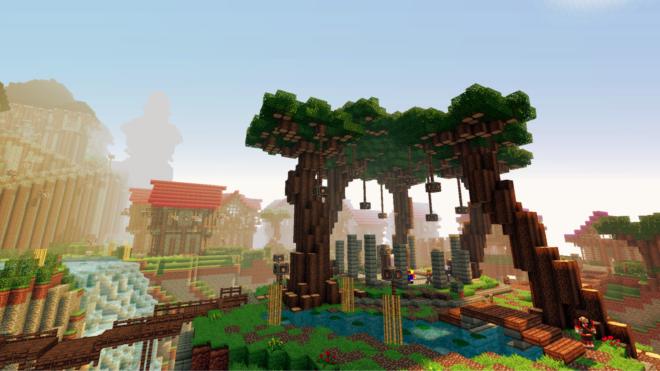
Table of Contents
This page was translated using deepl.com.
— minifisch
Alonian was a joint Minecraft project by Marc (Zelnehlun) and me (minifisch) — a German-speaking guild server designed to deliver an advanced PvP experience. Our idea was to build a system where strategic combat, guild structures, and technical depth took center stage — powered by custom plugins, self-made GUIs, and tailored gameplay mechanics.
Marc was primarily responsible for plugin development. He implemented the entire gameplay logic in Java, making the system more stable, performant, and flexible with every version. Meanwhile, I managed server operations, infrastructure, web presence, automation, and the overall concept.
Together, we developed many features from scratch: a fully custom guild system, visual effects, server-triggered sounds, a dynamic siege system, and custom in-game interfaces. While based on Spigot, the result was far beyond what standard servers offered.
Behind the scenes, we built automation tools, a role and permission system, web interfaces for administration, and maintained close interaction with the community — including a self-hosted forum. Many features were inspired directly by player feedback, which heavily influenced development.
Alonian ran for several years, entirely privately funded — driven purely by passion. For us, it was more than a game server; it was a platform for learning, experimentation, and growth — both technically and conceptually.

History #
It all started in 2011 — from a simple idea: we wanted to create a guild and combat system for Minecraft that was not only functional but fun and technically stable. The first tests ran locally on our own PCs using a basic Spigot setup and self-written plugins.
What began as a small hobby quickly evolved. The tiny test server grew into a structured system with automation, GUIs, dynamic events, a persistent world, and server-side control mechanisms — all built step by step.
It was never intended as a commercial project but was still built with a professional mindset. We focused on clean technical implementation, good performance, and a strong player experience. Looking back, Alonian was one of the most formative projects I’ve ever worked on — both technically and in terms of managing an active community.
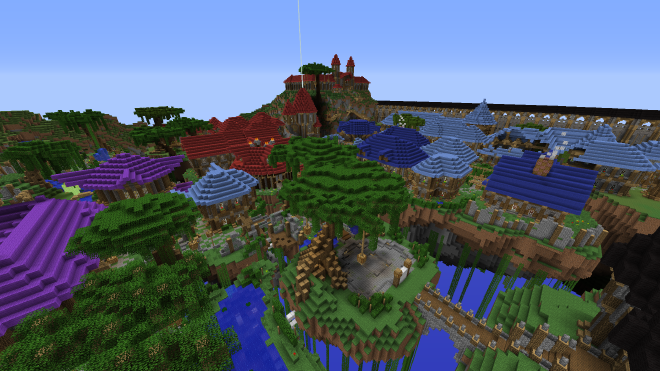
Technical Setup #
Initially, I hosted Alonian on a dedicated server from Hetzner — still running on traditional HDDs. At the time, that was sufficient, though I was already focused on stability and performance. Thanks to my background in hosting and administration, I optimized the setup early to ensure smooth operation.
As player numbers grew, it became clear that the HDDs were becoming a bottleneck — especially when loading areas or during peak activity. I decided to upgrade to SSDs, even though they were expensive back then and significantly increased monthly costs. Alonian was entirely privately funded, and we never made a cent from it — but ensuring a great player experience was worth it. The upgrade paid off: loading times dropped drastically, and gameplay felt much smoother.
Meanwhile, Marc continued refining the plugins. Everything was custom-built — no off-the-shelf solutions or pre-made systems. With each version, the plugins became faster, more stable, and more refined, especially in PvP and event handling. It was an exciting time — we learned a lot technically and were genuinely proud of what we built.
Gameplay & Features #
At the heart of Alonian was its guild system — everything revolved around structured group combat, territorial control, and cooperative resource management. Players could form guilds, assign ranks, and defend or expand their territories. Battles between guilds weren’t simple PvP skirmishes but strategic sieges with defined rules and time windows.
We implemented custom GUIs early on — for guild management, trading, siege tracking, and events. The goal was to make gameplay more intuitive and immersive — moving away from text commands toward an interactive interface.
Beyond core PvP mechanics, we added numerous features: particle effects for special abilities, server-side sounds for immersion, and unique events where guilds fought for rare resources or control of special areas. NPCs with custom behavior, area-based rules, and a dynamic reputation system were also planned or in development.
Another highlight was the progression and reward system — players could unlock new abilities or privileges through victories and contributions to their guild. Everything was handled via our own modular and extensible plugins, purpose-built for our game design.
The video below shows one of the earliest iterations of our gameplay from 2012.
Community & Operations #
What made Alonian truly special was not just the technology but the community that grew around it. Players weren’t just “users on a server” — they were part of a living system. Many were active long-term, founded their own guilds, formed alliances, or maintained rivalries — it often felt like a full-fledged MMO.
We established a central hub early on, including our own forum and a TeamSpeak 3 server for announcements, support, and discussions. There was also a web interface with administrative tools for guild leaders, moderators, and staff.
Operations were highly automated — from backups and restarts to logging and internal monitoring. Still, one of us was almost always available in case something broke. During peak times or events, stability was key — so monitoring, logging, and structured permissions were critical.
Moderation was handled seriously but fairly — clear rules, structured permissions, and a reporting system kept things balanced. We aimed to create an enjoyable environment where fair play and respect were standard, and cheating or toxic behavior had consequences.
Many players contributed ideas, feedback, and suggestions — some of which were implemented directly. That community-driven development kept the project alive and motivating, even though it was entirely private and unpaid.
Screenshots #
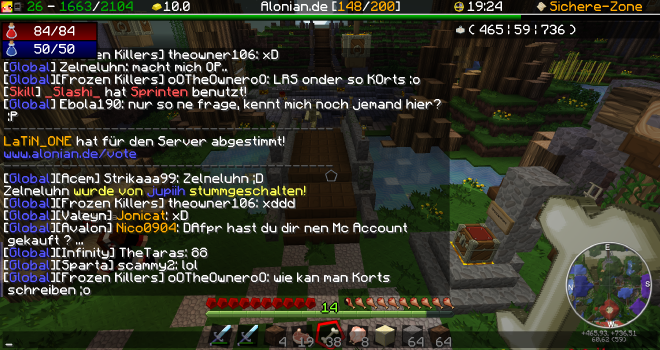
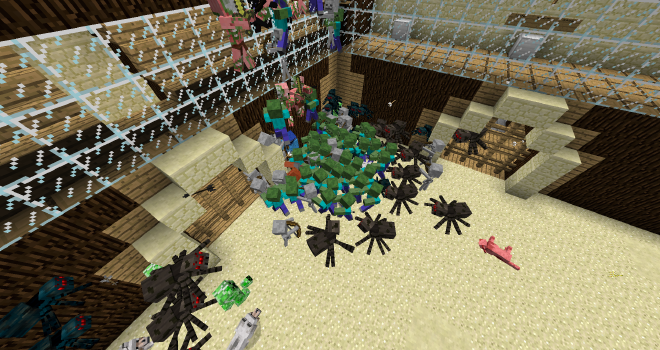
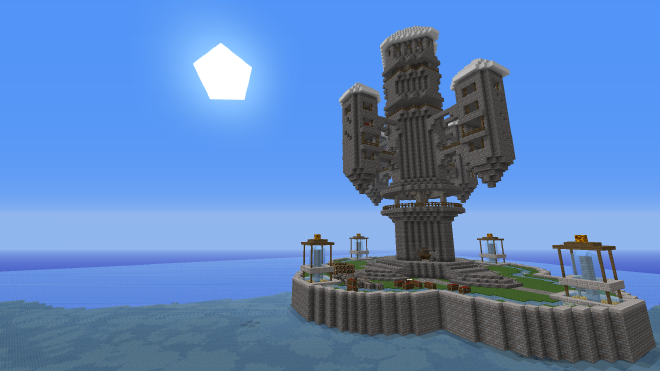
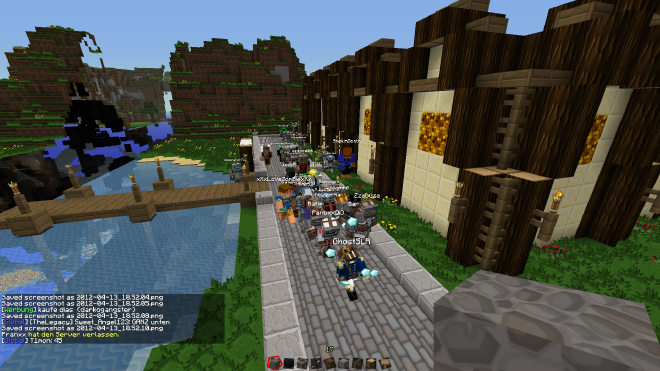
Retrospective & Conclusion #
Alonian was one of the most defining projects of my early IT journey. It was more than a Minecraft server — it was where I learned a tremendous amount about server operation, infrastructure, community management, and collaboration. Many of the professional skills I later applied in my career originated here. It was also my first large-scale technical project built alongside an active user community — with real feedback, real problems, and real achievements.
I stepped back from the project in 2013. Marc continued to run and maintain Alonian with the existing team until 2014, keeping it stable and engaging for players.
Although the project is no longer online, I’m proud of what we accomplished — technically, organizationally, and personally. It was a fully self-funded, non-commercial project driven purely by passion for technology and gameplay.
Looking back, Alonian was a creative playground where we not only built but grew — as developers, admins, and as a team. And honestly: it was just a great time.